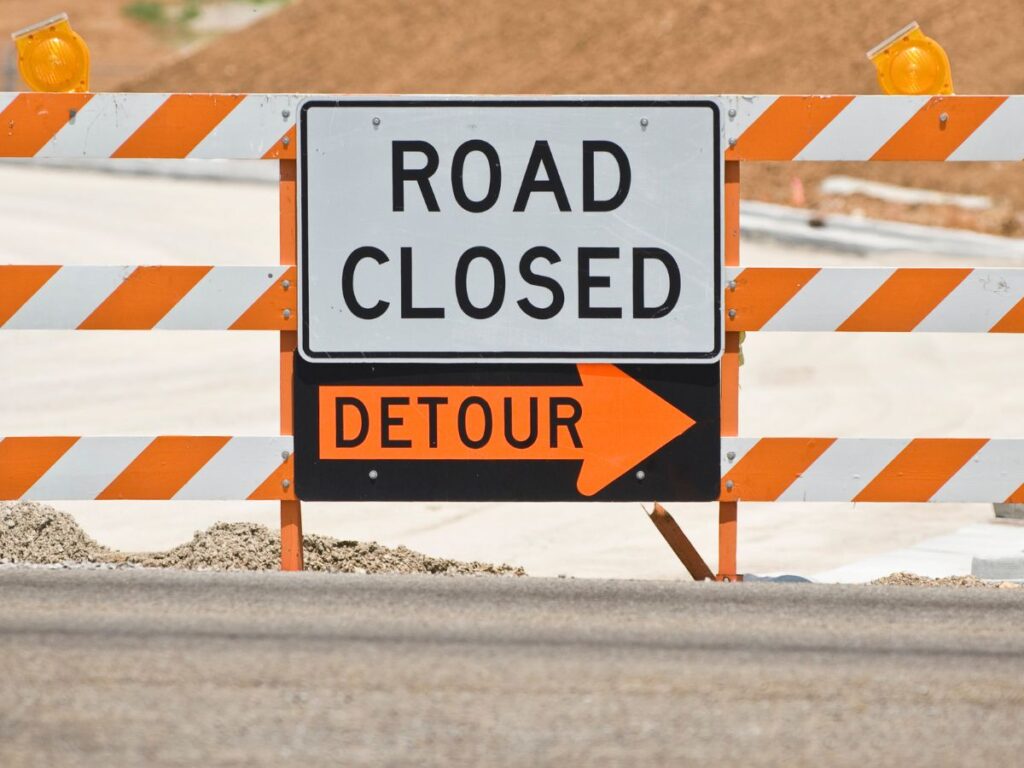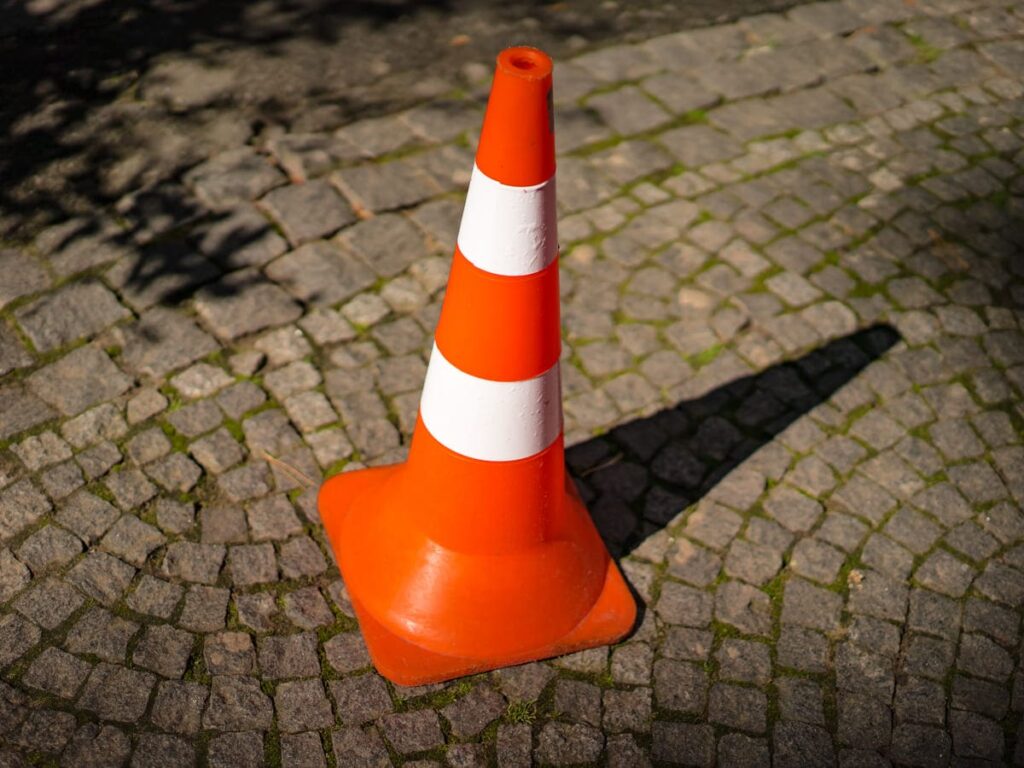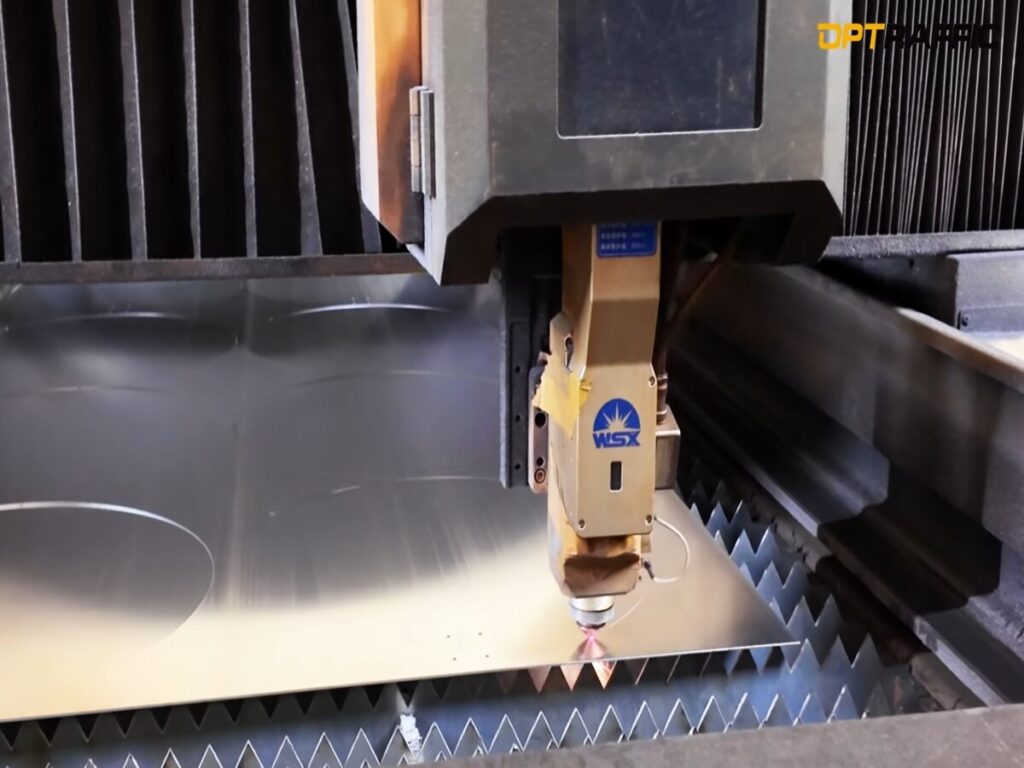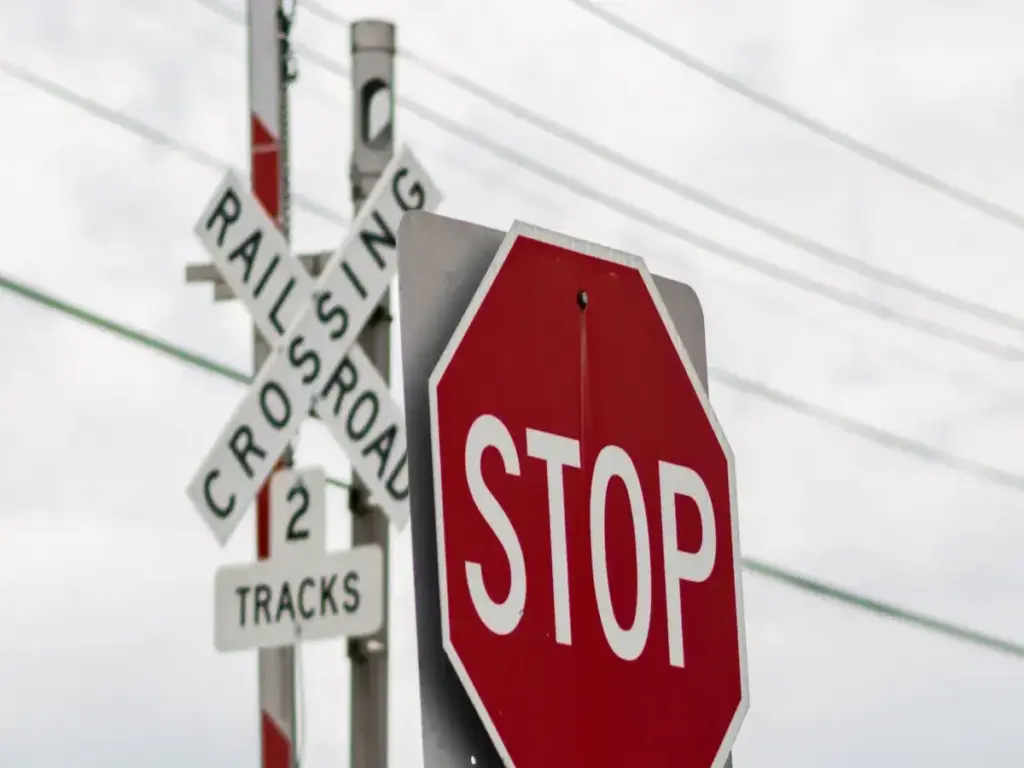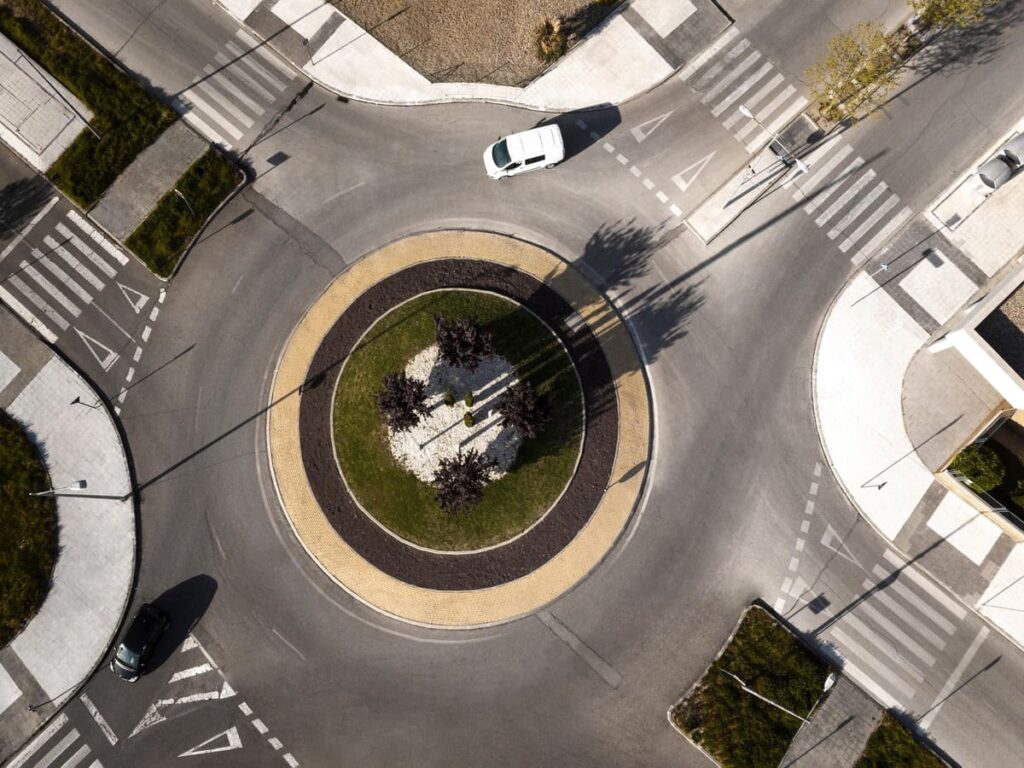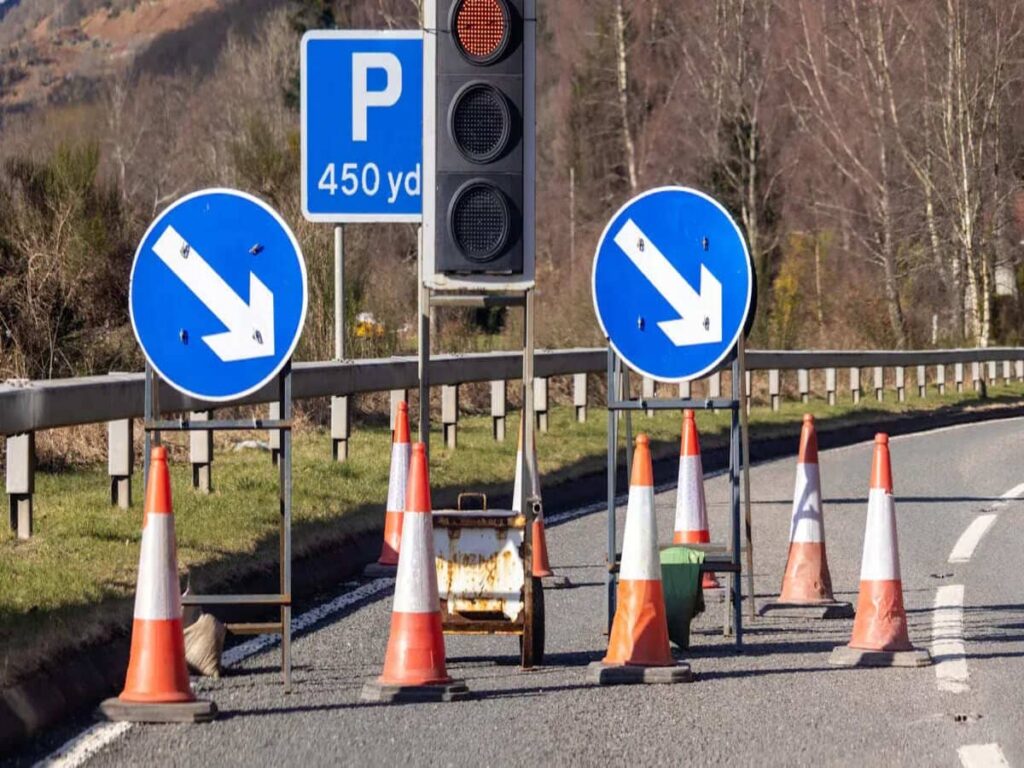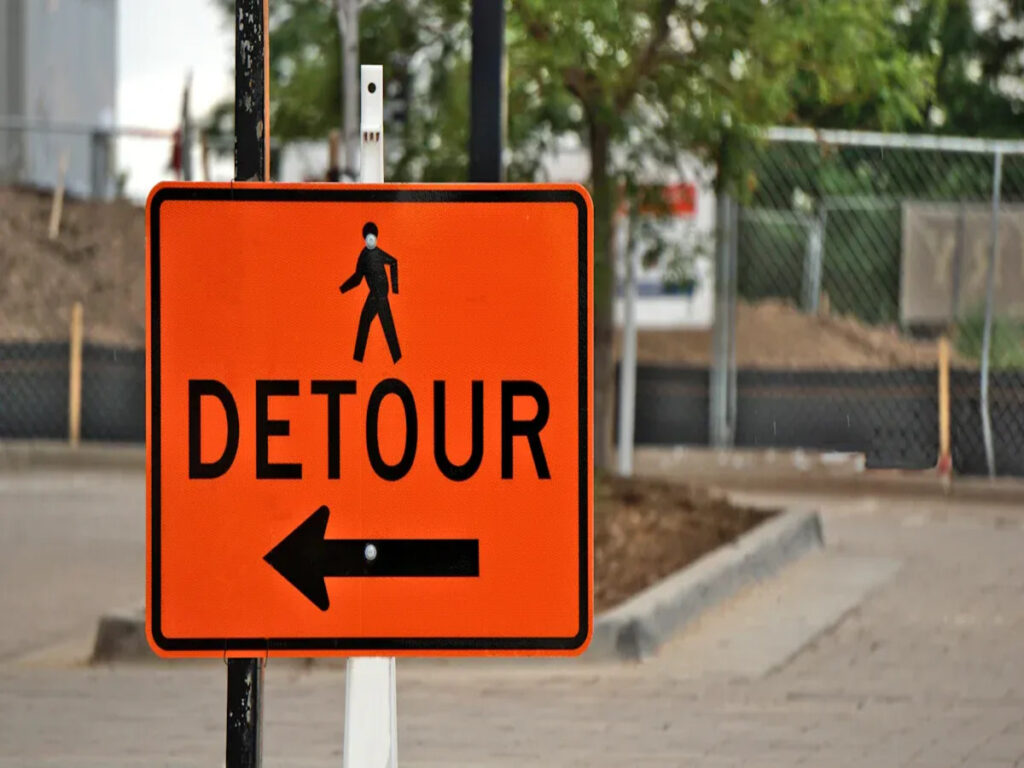
لديك وظيفة مهمة في إدارة التفاف في موقع البناء. تساعد إدارة التفاف الجيدة في الحفاظ على السائقين والأشخاص الذين يمشون بأمان. تظهر الدراسات أن مشرقًا, علامات التفاف اللامعة وعلامات واضحة الحوادث المنخفضة. كما أنها تساعد في تقليل التأخير من خلال ما يصل إلى 20%. استخدام مراقبة حركة المرور المؤقتة المناسبة يوقف الارتباك واشتعاش المرور. تعمل مراقبة حركة المرور الجيدة أيضًا على إبقاء العمال آمنين وحركة المرور. عندما تنتبه إلى إدارة التفاف, أنت تجعل الموقع أكثر أمانًا للجميع.
في أوبترافيك, نحن نقدم مجموعة واسعة من الرؤية العالية علامات التفاف وحلول التحكم في حركة المرور المؤقتة. تم تصميم منتجاتنا لتقليل الارتباك, تحسين السلامة, والحفاظ على تدفق حركة المرور بسلاسة في مواقع البناء. استكشف مجموعتنا من حلول إدارة حركة المرور اليوم لتعزيز السلامة والكفاءة في مشروعك القادم.
أهمية علامات الالتفاف
السلامة والامتثال
عندما تدير الإشارات الالتفافية بشكل جيد, أنت تساعد في إبقاء الجميع آمنين. علامات الانعطاف هي أجهزة مراقبة حركة المرور الهامة. يخبرون السائقين عن التغييرات في الطرق العادية. يحصل السائقون على تحذيرات وتوجيهات واضحة من هذه العلامات. أنت تساعد السائقين على معرفة متى يجب عليهم إبطاء السرعة أو تغيير الممرات. ال دليل على أجهزة مراقبة حركة المرور الموحدة (Mutcd) يعطي قواعد لهذه الإشارات المرورية. تأكد من هذه القواعد علامات التفاف تبدو هي نفسها في كل مكان. هذا يساعد السائقين على معرفة ما يمكن توقعه. يساعد استخدام علامات الطريق هذه في خطتك الأشخاص على اتباع قوانين المرور. وهذا يقلل من الحوادث ويحافظ على حركة المرور. التحكم المؤقت الجيد في حركة المرور يحافظ على سلامة العمال أيضًا. كما أنه يساعد في السلامة على الطرق. يجب عليك التأكد من أن كل علامة يسهل رؤيتها وقراءتها. وهذا يوقف الارتباك ويحافظ على أمان الموقع.
نصيحة: تحقق دائمًا مما إذا كان لديك علامات التفاف اتبع قواعد MUTCD. وهذا يجعلها قانونية ويسهل على السائقين اكتشافها.
التقليل من الاضطراب
إدارة المنعطفات تفعل أكثر من مجرد الحفاظ على سلامة الناس. كما أنه يساعد على وقف التأخير والاختناقات المرورية أثناء البناء. واضح علامات التفاف وخطة جيدة لتوجيه السائقين بعيدًا عن الطرق المغلقة. كما أنها تساعد على تجنب الأماكن المزدحمة. تساعد تقنية منطقة العمل الذكية وأنظمة التحذير من الطوابير كثيرًا. يمكنهم تقليل حوادث الاصطدام الخلفية بنسبة تصل إلى 70%. قد ترى أيضا 23% عدد أقل من الحوادث الثانوية. إن وضع أجهزة التحكم في حركة المرور في الأماكن الصحيحة يساعد أيضًا. يمكن أن يقلل من حوادث التصادم الخلفية 45%. يمكن أن تؤدي خطط التحويل الأفضل إلى تقليل أوقات حركة المرور المزدحمة 5%. هذا يعنى 20-30% تأخير أقل. هذه الإجراءات توفر الوقود وتقلل التلوث. وهذا يجعل مشروعك أفضل للبيئة. تساعد إدارة المنعطفات الجيدة الأشخاص على الوصول إلى المكان الذي يحتاجون إليه بشكل أسرع وبضغط أقل.
- استخدم البيانات من الهواتف المحمولة للعثور على أفضل الطرق.
- ضع اللافتات مبكرًا حتى يتوفر للسائقين الوقت للرد.
- قم بتغيير اللافتات عند الحاجة للحفاظ على حركة المرور.
أنت تساعد كثيرًا عندما تركز على السلامة وسلاسة حركة المرور في إدارة المنعطفات الخاصة بك.
أنواع علامات الانعطاف
علامات تغيير المسار
تساعد علامات تغيير المسار السائقين عند تحرك الممرات أو إغلاقها. تظهر هذه العلامات للسائقين أين يذهبون. إنهم يمنعون الناس من الخلط. عادة ما تكون علامات تغيير المسار مستطيلة باللون الأصفر أو البرتقالي. وهذا يجعل من السهل رؤيتها كعلامات مؤقتة للتحكم في حركة المرور. تحتاج إلى التأكد من أن السائقين يمكنهم رؤيتهم جيدًا. ضع هذه العلامات في الأماكن المهمة مثل المداخل والتقاطعات. استخدم لوحات الأسهم المعيارية التي يمكن أن تتغير حسب الطرق المختلفة. تعتبر الألواح الأطول جيدة للطرق المزدحمة أو السريعة. تعمل الألواح الأقصر بشكل أفضل في شوارع المدينة ولكن يجب أن تكون واضحة. إبقاء جميع الإشارات على مستوى العين وعدم حجبها بأي شيء. إضاءة جيدة, مثل أضواء LED, يساعد السائقين على رؤية العلامات في الليل أو في الأحوال الجوية السيئة. تحقق من اللافتات بشكل متكرر لإبقائها نظيفة وسهلة القراءة.
نصيحة: اتبع دائمًا قواعد مثل MUTCD الخاصة بإشارات تغيير المسار. وهذا يبقي موقعك آمنًا وقانونيًا.
علامات الالتفاف وإغلاق الطرق
توضح علامات الالتفاف وعلامات إغلاق الطرق للسائقين إلى أين يتجهون عندما تكون الطرق مغلقة. تساعد هذه العلامات السائقين في العثور على طرق جديدة آمنة. الأسهم الواضحة والكلمات البسيطة توقف الارتباك. ضع هذه العلامات على مسافة كافية قبل الإغلاق حتى يتوفر للسائقين الوقت للرد. تأكد من أن العلامات كبيرة وسهلة القراءة, خاصة عندما يكون هناك الكثير من حركة المرور. استخدم المتاريس التي تحمل هذه العلامات لإغلاق الطرق المغلقة وتوجيه السيارات. تمنح العلامات التحذيرية المتقدمة قبل الإغلاق السائقين مزيدًا من الوقت لتغيير مسارهم.
علامات دمج المسار المؤقتة
علامات دمج المسار المؤقتة تحذر السائقين عندما يصبح المساران مسارًا واحدًا. تساعد هذه العلامات في إيقاف التوقفات والاصطدامات المفاجئة. استخدم العلامات التحذيرية وأجهزة التوجيه المتقدمة لإظهار المسار الجديد. ويوضح الجدول أدناه القواعد المهمة لهذه العلامات:
| وجه | معيار / خيار | تفاصيل |
|---|---|---|
| الأضواء الوامضة | خيار | يُستخدم على الحواجز لمساعدة السائقين على رؤية نقاط الدمج |
| معدل الفلاش | معيار | 55-75 يومض في الدقيقة |
| الرؤية | معيار | أضواء مرئية من 3,000 قدم في الليل |
| ارتفاع ارتفاع | معيار | على الأقل 30 بوصة فوق الأرض |
| التوجيه الاتجاهي | معيار | استخدم علامات الأسهم الكبيرة فوق المتاريس |
يجب عليك الحفاظ على اللافتات والحواجز في حالة جيدة. قم بوضعهم مبكرًا وتأكد من عدم وجود أي شيء يمنعهم.
علامات حدود السرعة المؤقتة
تخبر علامات حدود السرعة المؤقتة السائقين بإبطاء السرعة في مناطق البناء. تساعد علامات المرور هذه في الحفاظ على سلامة العمال والسائقين. تظهر علامات عرض السرعة الديناميكية للسائقين سرعتهم على الفور. وهذا يساعد السائقين على التباطؤ إذا كانوا يسيرون بسرعة كبيرة. تظهر الدراسات أن هذه العلامات يمكن أن تخفض السرعات عن طريق 4-5 ميلا في الساعة وتقليل السرعة. ضع علامات تحديد السرعة بالقرب من منطقة العمل للحصول على أفضل النتائج. استخدم العلامات التحذيرية المتقدمة قبل تغيير السرعة. استخدم علامات حدود السرعة مع الكاميرات أو الشرطة لمساعدة الأشخاص على اتباع القواعد. الألوان الزاهية والأرقام الواضحة تجعل العلامات أسهل في الرؤية.
ملحوظة: استخدم دائمًا إشارات التحكم المرورية والحواجز المؤقتة معًا للحصول على أفضل النتائج. تتيح العلامات التحذيرية المتقدمة للسائقين الوقت للرد والحفاظ على سلامة الجميع.
مخاطر اللافتات غير المناسبة
الحوادث والتأخير
إذا لم تتمكن من إدارة الإشارات الالتفافية بشكل جيد, يمكن أن تحدث مشاكل كبيرة. يمكن أن يشعر السائقون بالارتباك إذا كانت اللافتات مفقودة أو يصعب رؤيتها. يمكن أن يؤدي هذا الارتباك إلى توقف السائقين بسرعة أو الانعطاف بسرعة كبيرة. أحيانا, وقد يدخل السائقون في طرق مغلقة عن طريق الخطأ. من الواضح أن عدم وضع علامات على إغلاق الممرات أو التحويلات يعرض الجميع للخطر. يمكن أن يتأذى كل من السائقين والأشخاص الذين يسيرون. تواجه العديد من مواقع البناء مشاكل تتعلق بالسلامة بسبب اللافتات المفقودة أو الموضوعة بشكل سيء. يمكن أن تتسبب هذه الأخطاء في اصطدام السيارات ببعضها البعض أو حدوث اختناقات مرورية طويلة.
كان هناك مثال حقيقي في مدينة تسببت فيها اللافتات غير الواضحة في ازدحام مروري كبير. تعرض بعض السائقين لحوادث صغيرة لأنهم فاتهموا المنعطف. كانت اللافتة مخبأة خلف شجرة, لذلك لم يتمكن الناس من رؤيته. واجه عمال الطوارئ صعوبة في الوصول إلى مكان الحادث بسرعة. وهذا يوضح لماذا يجب أن تكون جميع العلامات سهلة الرؤية والفهم.
ملحوظة: وقال مركز السيطرة على الأمراض أن هناك قد انتهى 2.1 مليون زيارة طارئة من إصابات حوادث المرور في 2020. حدثت العديد من هذه الحالات حيث لم تكن مراقبة حركة المرور جيدة.
القضايا المشتركة
قد تلاحظ بعض المشكلات الشائعة في إدارة التحويلات في مواقع البناء:
- علامات غير واضحة, مفتقد, أو مربكة تجعل القيادة غير آمنة.
- العلامات التي يصعب رؤيتها أو الباهتة تجعل من الصعب على السائقين اكتشاف التغييرات.
- تتسبب اللافتات غير المتطابقة أو التي تعطي رسائل مختلطة في حدوث تغييرات مفاجئة في الحارة وتجاهل المنعطفات.
- إذا لم يتحقق أحد من العلامات كثيرًا, يمكن أن يتم حظرها أو كسرها.
- يمكن للعمال الذين لم يتم تدريبهم جيدًا أن يرتكبوا أخطاء عند وضع اللافتات.
تعلمنا الأحداث الماضية أن العلامات يجب أن تكون واضحة, من السهل القراءة, ورعايتهم. على سبيل المثال, حملة "Zipper Merge" في مينيسوتا استخدم علامات بسيطة لمساعدة السائقين. يؤدي هذا إلى تقليل حوادث المرور والاختناقات المرورية بنسبة تصل إلى 40%. فحص اللافتات كل يوم واستخدام اللوحات الإلكترونية يبقي اللافتات واضحة وحديثة. تحتاج إدارة التحويلات الجيدة دائمًا إلى خطة قوية, العمال المدربين, والشيكات العادية. تحافظ هذه الخطوات على سلامة الأشخاص وتساعد على تحرك حركة المرور بشكل أفضل.
أفضل ممارسات إدارة المنعطفات
التخطيط المسبق والتقييم
أنت بحاجة إلى خطة جيدة قبل البدء في إدارة التحويلات. يساعد تخطيط الطرق الالتفافية مبكرًا على إيقاف المشكلات لاحقًا. فيما يلي خطوات لخطة قوية لتحويل حركة المرور:
- تحقق من حجم مشروعك وأين هو. فكر في المدة التي سيستغرقها الأمر وكيف سيؤثر ذلك على الأشخاص القريبين منك.
- احصل على جميع التصاريح اللازمة من السلطات المحلية. اتبع القواعد مثل دليل أجهزة التحكم في حركة المرور الموحدة.
- وضع خطة لإدارة حركة المرور. إضافة مخططات تدفق حركة المرور, قائمة علامات التحكم المرورية المؤقتة, توقيت التغييرات, خطوات السلامة للعمال والمشاة, طرق التفافية, والوصول الطارئ.
- العمل مع موظفي مراقبة حركة المرور وخدمات الإبلاغ. تأكد من حصول الجميع على التدريب وعلى استعداد.
- خطط لإشاراتك وطرق التحدث مع الناس. ضع علامات التحذير مبكرًا واستخدم علامات الرسائل المتغيرة إذا لزم الأمر. تأكد من أن جميع علامات وعلامات الانعطاف تساعد السائقين والمشاة على التحرك بأمان حول منطقة العمل.
نصيحة: تحقق دائمًا من خطط التحكم في حركة المرور الخاصة بك مع السلطات المحلية قبل البدء. وهذا يحافظ على منطقة العمل آمنة للجميع.
وضع اللافتات وإمكانية رؤيتها
ضع علامات مراقبة مرورية مؤقتة حيث يمكن للجميع رؤيتها. استخدم مواد عاكسة مثل الصفائح المنشورية عالية الكثافة أو الصفائح الماسية. تحافظ هذه المواد على سطوع اللافتات أثناء الليل وفي الأحوال الجوية السيئة. تشير الدراسات إلى أن المواد الأفضل يمكن أن تقلل معدلات التصادم بنسبة تصل إلى 38%. قم بتنظيف علاماتك والتحقق منها كثيرًا حتى تظل سهلة القراءة.
لمزيد من الأمان, استخدم المنارات أو الأضواء الوامضة على المتاريس وأجهزة توجيه القنوات. ضع لافتات أمام منطقة العمل بمسافة كبيرة حتى يتوفر للسائقين الوقت للرد. العلامات التي تحتوي على رسائل بسيطة تعمل بشكل أفضل. إذا كان الجو ممطرًا أو ضبابيًا, تأكد من أن فريقك يرتدي معدات عالية الوضوح. استخدم الأبراج الضوئية والشريط العاكس على القبعات والسترات. وهذا يحافظ على سلامة العمال وموظفي مراقبة المرور ويسهل رؤيتهم.
تقوم خطة إدارة المرور الجيدة دائمًا بفحص جميع العلامات والأدوات والعناية بها. يساعد هذا في الحفاظ على التحكم المؤقت في حركة المرور بشكل جيد.
التواصل والتنسيق
لا يمكنك إدارة الإشارات الالتفافية بنفسك. أنت بحاجة إلى العمل مع السلطات المحلية, خدمات الطوارئ, والمجتمع. التواصل الجيد والعمل الجماعي يجعل إدارة التحويلات تعمل بشكل جيد. فيما يلي بعض أفضل الممارسات:
- عقد اتفاقيات مع الشرطة, نار, وخدمات الإسعاف قبل البدء.
- خطط لطرق الطوارئ وأخبر جميع المعنيين.
- استخدم أنظمة الاتصالات المركزية مثل أجهزة الراديو أو مراكز عمليات الطوارئ.
- عقد التدريبات والتدريبات العملية مع جميع الفرق.
- احتفظ بأجهزة التحكم في حركة المرور, علامات, والمركبات جاهزة.
- مشاركة التحديثات مع الجمهور باستخدام مواقع الويب, وسائل التواصل الاجتماعي, والأخبار.
- الاستماع إلى ردود الفعل من السائقين, المشاة, والشركات المحلية.
ملحوظة: تساعد العلامات الواضحة والتواصل الجيد على بناء الثقة مع المجتمع ومساعدة الأشخاص على اتباع المنعطفات.
التكنولوجيا في التحكم المؤقت في حركة المرور
التكنولوجيا الحديثة تجعل إدارة التحويلات أكثر أمانًا وذكاءً. يستخدم علامات الرسالة الديناميكية لإعطاء تحديثات في الوقت الحقيقي حول إغلاق الطرق أو التأخير. تساعد علامات حدود السرعة المتغيرة على التحكم في سرعة المرور في منطقة العمل. تساعد الإضاءة الموجودة على الرصيف والكاميرات المحمولة في توجيه حركة المرور ومراقبة الظروف.
تستخدم أنظمة إدارة حركة المرور المتقدمة أجهزة الاستشعار والكاميرات لجمع البيانات. يمكن لهذه الأنظمة التنبؤ بالاختناقات المرورية وتغيير الإشارات أو الإشارات للحفاظ على حركة المرور. يمكن للأنظمة التي تعمل بالذكاء الاصطناعي تقليل أوقات التنقل بما يصل إلى 20% وتقليل حركة المرور المتوقفة والذهاب إلى النصف. تعمل اللافتات التي تعمل بالطاقة الشمسية والاتصالات اللاسلكية على تسهيل إعداد اللافتات الذكية بسرعة, حتى في الأماكن البعيدة.
شرح: تساعدك التكنولوجيا على التصرف بسرعة عندما تتغير الأمور. كما أنه يبقي الجميع على اطلاع ويجعل منطقة العمل أكثر أمانًا للعمال والمشاة.
مراجعة ما بعد التحويل
بعد انتهاء المنعطف, تحقق من كيفية عمل خطتك. اسأل مستخدمي الطريق, العمال, والسكان المحليين للحصول على ردود الفعل. تحقق مما إذا كانت علامات وأجهزة التحكم في حركة المرور المؤقتة الخاصة بك ظلت واضحة وتعمل بشكل جيد. انظر إلى بيانات حركة المرور لمعرفة ما إذا كان هناك تأخير أو حوادث.
اكتب ما سار بشكل جيد وما يجب أن يكون أفضل. قم بتحديث خطة إدارة حركة المرور الخاصة بك في المرة القادمة. شارك ما تعلمته مع فريقك والسلطات المحلية. ويساعد ذلك في جعل منطقة العمل أكثر أمانًا ويحافظ على سلامة السائقين والمشاة في المستقبل.
نصيحة: تعد المراجعات والتحديثات المنتظمة من أفضل الممارسات المهمة لإدارة المنعطفات بشكل جيد.
دراسات حالة في التحكم في حركة المرور
مشروع Crossrail في لندن
حدث مشروع Crossrail في لندن المزدحمة. استخدم الفريق واضحا علامات التفاف والتخطيط الجيد. لقد وضعوا اللافتات مبكرًا وقاموا بتغييرها حسب الحاجة. كانت لوحات الرسائل الرقمية على الطرق الرئيسية. قدمت هذه اللوحات تحديثات حية حول عمليات الإغلاق والطرق الجديدة. وعمل الفريق مع المجالس المحلية وخدمات الطوارئ. كانوا يجتمعون في كثير من الأحيان لتبادل الأخبار. أدى هذا العمل الجماعي إلى الحفاظ على سلامة الجميع وإيقاف الارتباك للسائقين والأشخاص الذين يسيرون.
نصيحة: استخدم الإشارات الرقمية وقم بتقديم التحديثات بشكل متكرر. وهذا يساعد الناس على العثور على أفضل طريقة خلال المشاريع الكبيرة.
الطريق السريع 401, تورنتو
الطريق السريع 401 طريق مزدحم للغاية في كندا. أثناء أعمال البناء, تم استخدام نظام إدارة حركة المرور على الطرق السريعة. يحتوي هذا النظام على كاميرات وأجهزة استشعار لمراقبة حركة المرور وإشارات التحكم. لقد ساعد في تقليل حوادث الإصابة الخلفية. لقد جعلت التكنولوجيا الطريق أكثر أمانًا للجميع. وضع الفريق واضحا علامات التفاف واستخدمت اللوحات الإلكترونية لتحذير السائقين. لقد قاموا بفحص العلامات في كثير من الأحيان وحلوا المشاكل بسرعة. أدى هذا إلى استمرار حركة المرور والحفاظ على سلامة العمال والسائقين.
مناطق البناء في مدينة نيويورك
تشهد مدينة نيويورك حركة مرور كثيفة كل يوم. إدارة البناء هنا تحتاج إلى خطط تحويلة قوية. تستخدم المدينة لافتات مؤقتة ولوحات رقمية متقدمة. تظهر هذه العلامات طرقًا جديدة وتحذر من إغلاق الممرات. تعمل الفرق مع الشرطة والشركات المحلية. يقومون بمشاركة التحديثات على وسائل التواصل الاجتماعي ومواقع المدينة. يساعد هذا الحديث المفتوح الأشخاص على التخطيط للرحلات وتجنب التأخير. ردود الفعل من الجمهور تساعد على جعل المشاريع المستقبلية أفضل.
ملحوظة: تستخدم إدارة المنعطفات الجيدة إشارات واضحة, التكنولوجيا الذكية, والعمل الجماعي. هذا يبقي الجميع آمنين وحركة المرور, حتى في المدن المزدحمة.
يمكنك جعل موقع البناء الخاص بك أكثر أمانًا إذا كنت تستخدم إدارة جيدة للإشارات الالتفافية. علامات واضحة, التخطيط الجيد, وغالبًا ما يساعد فحص العلامات في استمرار حركة المرور. تعمل هذه الخطوات أيضًا على حماية الأشخاص الموجودين على الموقع.
- تحقق من خطط المرور الخاصة بك كثيرًا لاكتشاف المشكلات مبكرًا.
- اسأل العمال والجمهور عن رأيهم في اللافتات.
- تأكد من أن جميع العلامات سهلة الرؤية وصحيحة دائمًا.
- قم بتدريب فريقك على السلامة بشكل متكرر حتى يعرفوا ما يجب عليهم فعله.
- أخبر المجتمع عن أي تغييرات على الطرق.
حاول دائمًا إيجاد طرق أفضل لإدارة الانعطافات. إن عملك الجاد يساعد الجميع على البقاء آمنًا عند سفرهم.
التعليمات
ما الذي يجعل علامة الالتفاف سهلة الفهم?
يجب عليك استخدام كبيرة, حروف جريئة وكلمات بسيطة. تساعد الألوان الزاهية والأسهم الواضحة السائقين على رؤية الرسالة بسرعة. ضع اللافتة حيث لا يوجد شيء يمنعها. تأكد من أن اللافتة تتوافق مع تخطيط الطريق.
كم مرة يجب عليك التحقق من علامات الانعطاف؟?
تحقق من علامات الانعطاف الخاصة بك مرة واحدة على الأقل يوميًا. قد يؤدي سوء الأحوال الجوية أو حركة المرور الكثيفة إلى تحريك اللافتات أو إتلافها. تحافظ الفحوصات المنتظمة على سلامة الجميع وتساعد على تدفق حركة المرور.
هل يمكنك استخدام الإشارات الرقمية للتحويلات؟?
نعم, يمكنك استخدام الإشارات الرقمية. تظهر هذه العلامات التحديثات في الوقت الحقيقي. يمكنك تغيير الرسالة بسرعة إذا تغيرت حالة الطريق. تساعد العلامات الرقمية السائقين على اتخاذ خيارات أفضل.
من يقرر مكان وضع اللافتات الالتفافية?
أنت تعمل مع السلطات المحلية ومخططي المرور. أنها تساعدك على اختيار أفضل الأماكن للإشارات. يجب عليك اتباع قواعد السلامة والقوانين المحلية. العمل الجماعي الجيد يجعل إدارة المنعطفات أفضل.

